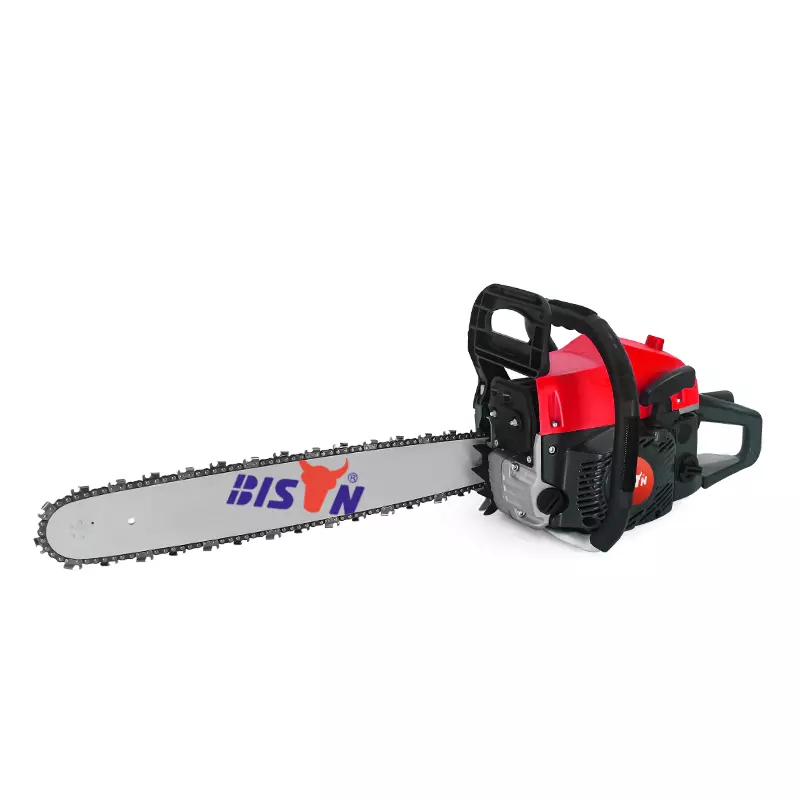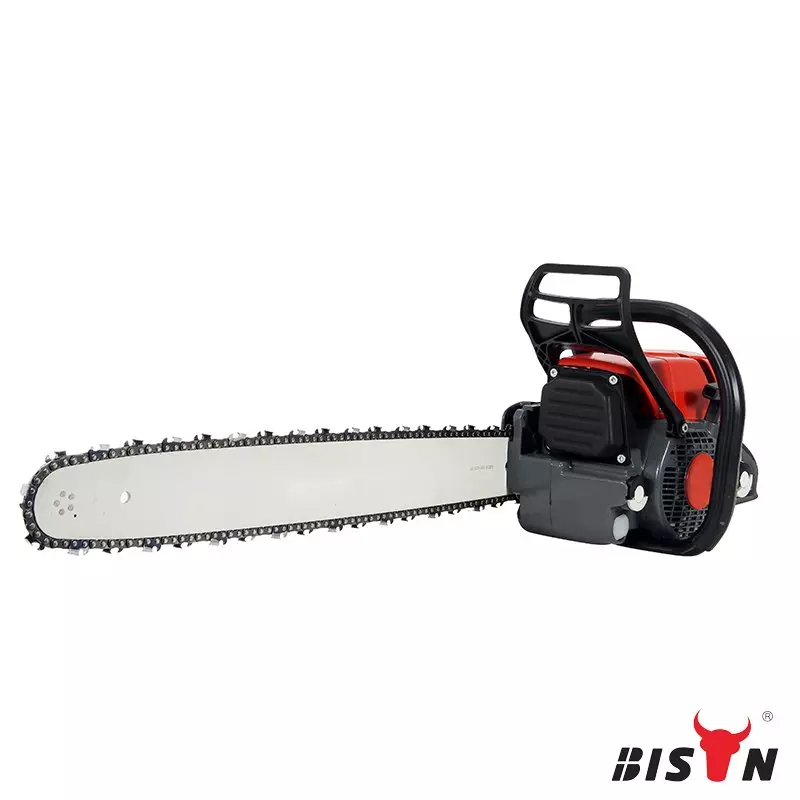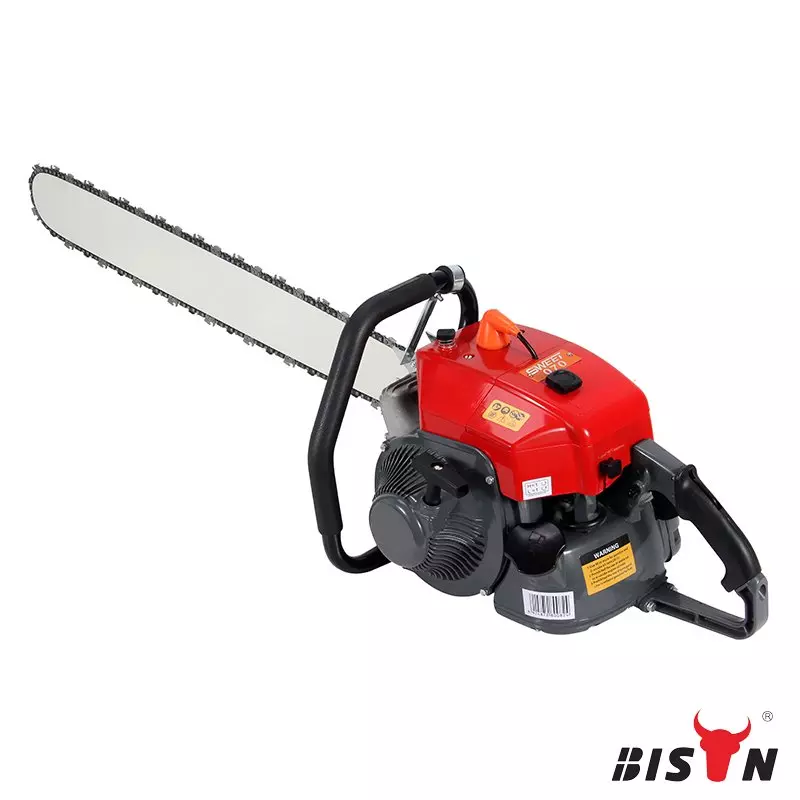Chainsaw backfires: Know the issues and stay safe
2024-03-20
Table of content
Chainsaw safety is an important part of properly and efficiently using these powerful tools. Subsequently, a critical aspect of chainsaw safety that is often overlooked is the phenomenon known as chainsaw backfire.
Chainsaw backfire, as scary as it sounds, is a common phenomenon. Without proper understanding and proper precautions, chainsaw backfiring can lead to dangerous situations resulting in personal injury and serious damage to the tool.
In this article, BISON aims to provide a comprehensive overview of situations in chainsaw backfire. We'll reveal the root cause behind this anomaly, ranging from poor fuel quality to a faulty carburetor adjustment.
Armed with this understanding, we'll outline important measures to prevent these backfires from occurring and guide you through key troubleshooting techniques. Reading on will give you a better understanding of the problem from various perspectives.
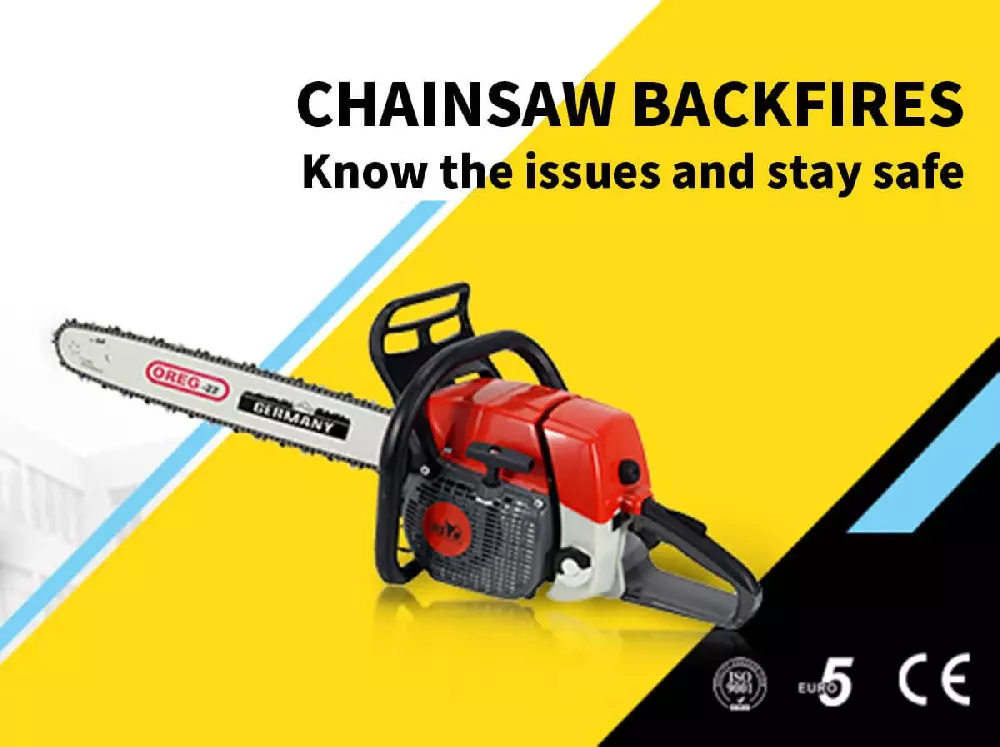
What is chainsaw backfire?
Chainsaw backfire is when a chainsaw's exhaust pipe or carburetor accidentally emits flames or makes excessive noise. To have a good grasp of chainsaw backfire, it is necessary to understand the basic combustion process inside the chainsaw.
Like many other tools and vehicles, chain saws are powered by an internal combustion engine. These engines run on a mixture of gasoline and air exposed to a spark from a spark plug in a confined space called a combustion chamber. This spark initiates the combustion process, causing the gases to expand rapidly. This expansion forces the piston downward, turning the crankshaft and ultimately driving the chain.
However, if this mixture is not ignited completely or at the correct time, the combustion process will be incomplete, causing excess fuel and gases to be expelled from the cylinder. The heat in the exhaust can ignite excess fuel. This means backfiring is essentially a misfire, a defective ignition and exhaust behavior that unknowingly turns the chain saw's exhaust system into a mini combustion chamber.
Common causes of chainsaw backfires
A chainsaw backfiring, while unexpected and potentially alarming, usually indicates an underlying problem with the saw's setup or maintenance. Several factors can cause this, including poor fuel quality, a dirty air filter, faulty spark plugs, and improperly adjusted carburetors. Below, we’ll look at these categories in more detail, revealing potential reasons why your chainsaw can backfire.
fuel system problem
One of the important factors that cause chainsaw backfire has to do with the saw's fuel, as it directly affects the engine's combustion process:
Incorrect fuel mixture: Chainsaws run on a specific mixture of gasoline and oil. The ratio has to be just right - any kind of imbalance will result in incomplete combustion and may be backfire.
Fuel quality: Poor quality or contaminated fuel can affect combustion and cause backfires.
Dirty air filter: A clean air filter is critical to maintaining the correct air-fuel mixture required for combustion. A clogged or dirty filter can starve the engine of air, making the mixture too "rich" (more gas than air), resulting in incomplete combustion and subsequent backfiring.
Carburetor problems: The carburetor regulates the amount of air and fuel entering the engine. Such as blocked jets or incorrect adjustments, can lead to a wrong fuel-to-air mixture ratio and backfire.
Ignition system problem
The ignition system plays a vital role in promoting the combustion process. Any problems in this system can cause counter-productive effects:
Spark plug problems: A damaged spark plug may not ignite the fuel-air mixture properly, causing a backfire. Besides, improper ignition timing can cause the spark plug to fire at the wrong time, causing a backfire.
Weak ignition coil: This component generates ignition sparks. If it's weak or faulty, it may not produce a strong enough spark to properly ignite the fuel-air mixture, causing incomplete combustion and flashback.
Other potential causes
In addition to the fuel and ignition system, there are a few other factors that can cause a chainsaw to backfire:
Advanced engine wear: As an engine ages, various components may begin to wear out, affecting its performance and the engine's overall efficiency. Any air leakage in the engine system can interfere with the proper functioning of the air-fuel mixture, causing a backfire.
Incorrect starting techniques: Engine flooding (which occurs when too much fuel is delivered before the engine starts) can also cause backfire. Accurate starting techniques can help avoid this problem.
Engine overheating: Excessive heat can cause the fuel to ignite prematurely, resulting in a backfire. Ensure adequate engine cooling and ventilation.
The dangers of chainsaw backfire
Chainsaws are counterproductive and, while destructive in nature, present significant risks in addition to being an inconvenience.
Burn risk: One of the most immediate and essential risks of a chainsaw backfiring is the potential for burns. Depending on the circumstances and the operator's proximity, this can cause minor to severe burns.
Possibility of chainsaw kickback: Chainsaw backfiring may cause the engine to accelerate suddenly. If the person operating the chainsaw is not positioned correctly or prepared to handle this explosive force, dangerous kickback can result.
Noise-induced hearing loss: Loud noises can be alarming when they are counterproductive and can damage hearing if exposure continues.
Chainsaw damage and performance issues: Recurrent backfiring can indicate and cause internal engine damage. Over time, components like the carburetor, spark plugs, and exhaust system can become damaged from improper combustion. This can further lead to poor chain saw performance, including reduced power, irregular idling speed, and reduced cut quality. As a result, the need for maintenance increases significantly, which in turn increases the overall cost of keeping the chain saw running.
Troubleshooting chainsaw backfire: A step-by-step guide
In the event of chainsaw backfire, the first step is to identify potential causes to understand what remedial action needs to be taken. This section provides a detailed step-by-step troubleshooting guide, describes when a DIY fix is appropriate, and advises on when to consult a professional. Remember - safety first! Before moving on any troubleshooting steps, ensure that your chainsaw is powered off and secure.
#Step 1: inspect the spark plug
Inspect spark plugs for fouling, wear, or damage. Replace the spark plug if necessary, and make sure it is properly closed. To install and remove the spark plug, use a spark plug wrench. And use the timing light to set the ignition timing correctly.
#Step 2: check the air filter
Remove and inspect the air filter for debris or dirt. If it's slightly dirty, clean it with warm soapy water, rinse, and let it dry completely before reinstalling. If it's significantly dirty or damaged, it's best to replace it with a new filter.
#Step 3: evaluate the fuel
Empty the chainsaw's fuel tank and check for impurities or debris. Use high-quality, clean fuel with the proper octane rating and adequately mixed with the proper quantity of oil - according to the manufacturer's guidelines.
#Step 4: Examine the carburetor
Check the carburetor for problems, such as blocked jets or incorrect adjustments. The carburetor should be cleaned and adjusted according to the manufacturer's instructions.
#Step 5: Air leaks address
Check and seal air leaks in the intake system. Common areas for leaks include gaskets, seals, and connections. Replace any damaged components.
#Step 6: Cooling system maintenance
Ensure proper engine cooling by cleaning the fins, checking for debris around the cylinders, and ensuring good air circulation. Overheating can contribute to backfires.
#Step 7: Starting techniques
The way a chainsaw is started can significantly influence the likelihood of a backfire. Priming according to your chainsaw's manual ensures. A primed engine is less likely to backfire due to a rich mixture or flooding. Besides, the way a chainsaw is operated can also contribute to the likelihood of a backfire. Cutting near inflammable material escalates the chance of mishaps during backfire.
#Step 8: Professional inspection
If the problem persists or you need clarification on making some repairs, consider taking your chainsaw to a professional for a thorough inspection and servicing. Regular maintenance practices can help prevent backfire problems and ensure your chainsaw performs at its best.
Conclusion
In this article, BISON have discussed some common reasons that can cause a chain to backfire. Hope this article was helpful and answered your questions.
At our factories in China, BISON has taken this knowledge and applied it to our manufacturing processes. BISON chainsaws are designed with advanced features to prevent this from happening, including air filters that are easy to access and clean, safety spark plugs, and user-friendly carburetor adjustments.
We welcome interested chainsaw dealers to partner with us and sale products from a company that is relentlessly committed to safety, performance and a user-friendly experience. Let's build a global community that uses and distributes chainsaws.
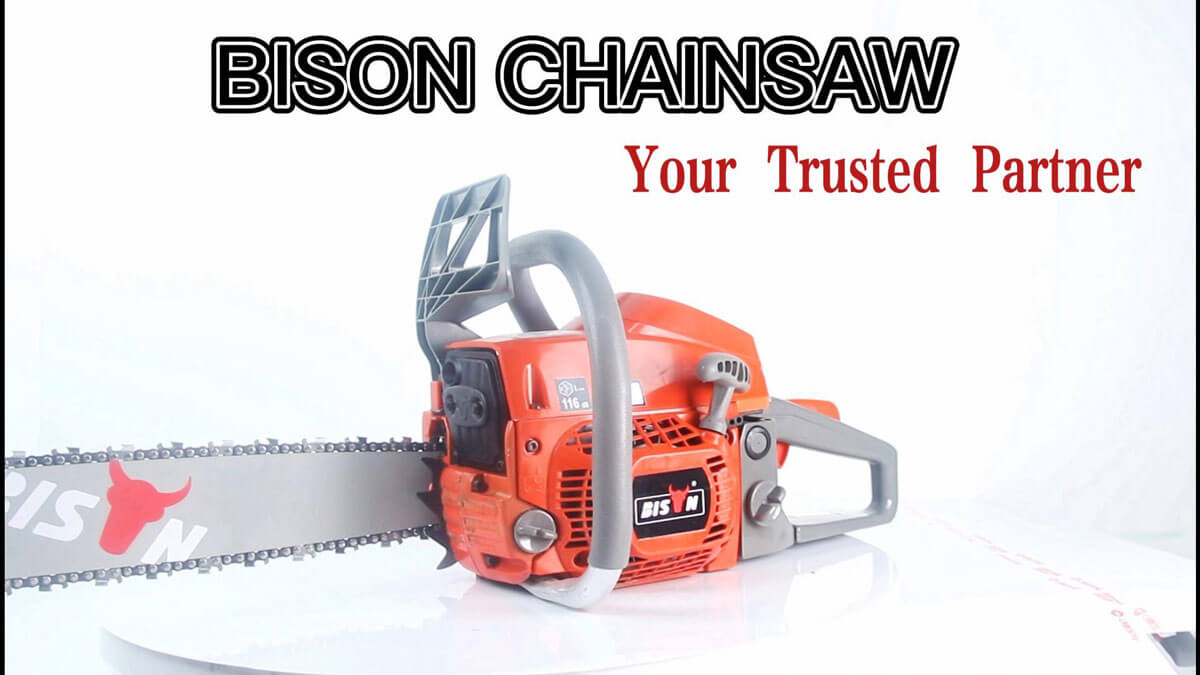
questions about chainsaw backfire
How can I tell if the timing on my chainsaw carburetor is off?
Another common problem most beginners may encounter while operating a chainsaw is improper carburetor timing. This can be the root of various problems, so you must ensure your carburetor is on time. Well, here are some things you can do to check your chainsaw carburetor timing:
First, you must find the TDC mark on your chain flywheel. Once you find it, you must align it with the mark on the chainsaw's body.
Remove the spark plug to verify the chainsaw's piston position. Take out the spark plug and then use the spark plug hole to insert a small rod into the cylinder.
The flywheel must be turned until you feel the piston strike the rod. Once TDC is located, mark it with a pencil or other marking tool.
Remove the rod and put the spark plug back in place. The flywheel must then be rotated until the chainsaw's body mark and the flywheel's TDC mark line up.
Now, look at the carburetor and see if the piston is in the correct position. If not, you must adjust the carburetor until it is in the correct position.
How do you adjust the air-fuel mixture in the carburetor?
The carburetor must mix the proper ratio of fuel to air. Therefore, it is essential to adjust the air-fuel mixture in your carburetor occasionally. Here's how you can do it:
Locating the carburetor's idle mixture screw is the first step. After discovering it, you must rotate it clockwise or counterclockwise to find the sweet spot.
The engine's smooth operating point is known as the sweet spot. When adjusting the mixture screw, you must use caution to avoid making the mixture too rich or too lean.
The engine may sputter if the mixture is too rich and overheat if it is too lean. To find the sweet spot, you must therefore proceed with caution and adjust the mixture screw.

